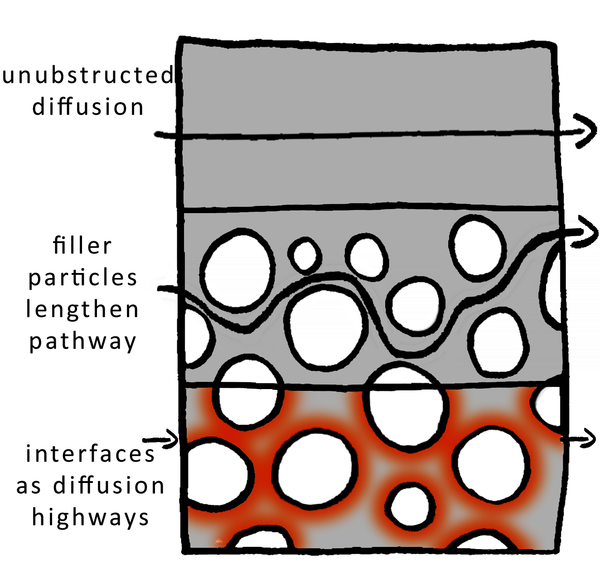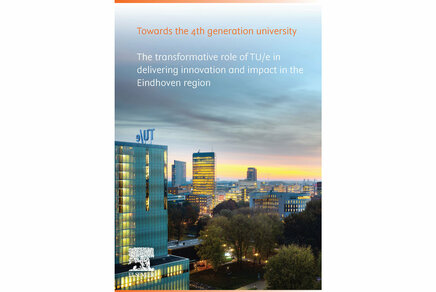Pathways of diffusion through microelectronic packaging materials
Anja Herrmann defended her PhD thesis at the department of Applied Physics on June 8th.

Microelectronics play an important role in the devices we use every day like LED string lights, smartphones, and safety-critical applications such as cars or airplanes. Contact of these small electric components with corrosive substances (such as water and ions) can quickly lead to corrosion and thus device failure. Encapsulating the microelectronics with packaging increases device lifetime but does not provide a perfect sealing. In her PhD research, Anja Herrmann studied how water and ions diffuse through microelectronic packaging materials to still cause damage to electronics.
To design packaging with a guaranteed product lifetime, the speed at which corrosive species find their way through the packaging materials must be known. Besides corrosion protection, the packaging has several other functions. This means that packages are made up of a mixture of different polymers and other additives.
As a result, corrosive substances such as water and ions can pass through the material via two main methods. First, they can move through the bulk polymer, and second, they can move along the interfaces between the bulk polymer and filler particles or wires.
Water transport
For her PhD research, Anja Herrmann looked at the pathways by which water and ions move through epoxy mold compounds (EMCs), which are epoxies filled with silica particles and used to encapsulate integrated circuits, and optical silicones with phosphor particles used as lenses in white LEDs.

Herrmann found that the transport of water through these systems differs. While she could not observe any change after adding fluorescent particles on the transport of moisture in optical silicones, the interphase layer forming between the silica filler particles and the epoxy matrix in EMCs showed an increased moisture transport compared to the unfilled epoxy matrix. This faster pathway along the interphase counteracts the slowing down effect which the filler particles otherwise have due to their barrier function (increasing the length of the transport pathway) but does not fully cancel it out.
Ion transport over a lifetime
The study of ion transport pathways was not as straightforward as for water, given that there are no established measuring techniques yet. Past studies show a wide range of transport times with the transport times through 0.1 mm of EMC reported to range from a few minutes to several thousand years.
Through a combination of a literature survey and a range of experiments using saltwater immersion, diffusion cell, and transient electric current measurements, Herrmann showed that factors such as moisture content, ion concentration, pH, electric bias, temperature (if above or below glass transition) as well as the type of counter ions have significant influence on the ion transport.
These conditions must be considered, controlled, and reported in studies to draw accurate conclusions on ion transport. Herrmann also observed that diffusion through packaging materials is very slow, meaning that methods like diffusion cells cannot yield results on diffusion coefficients in EMCs over the course of an experimenter’s lifetime, which is quite extraordinary!
This research widens the knowledge with regards to ion and water transport in microelectronic packaging materials, laying the foundation for improvements in package design and materials to create reliable, long-living microelectronics.
Title of PhD thesis: ‘Pathways of diffusion through microelectronic packaging materials’. Supervisors: Olaf Adan (TU/e), Bart Erich (TU/e), and Xuejun Fan (external).
Media contact
Latest news

![[Translate to English:] [Translate to English:]](https://assets.w3.tue.nl/w/fileadmin/_processed_/e/6/csm_Hendriks%20Banner%20image%20Photonic%20crystal%20fiber-tip%20sensor%20BvOF_9b4093b84b.jpg)
